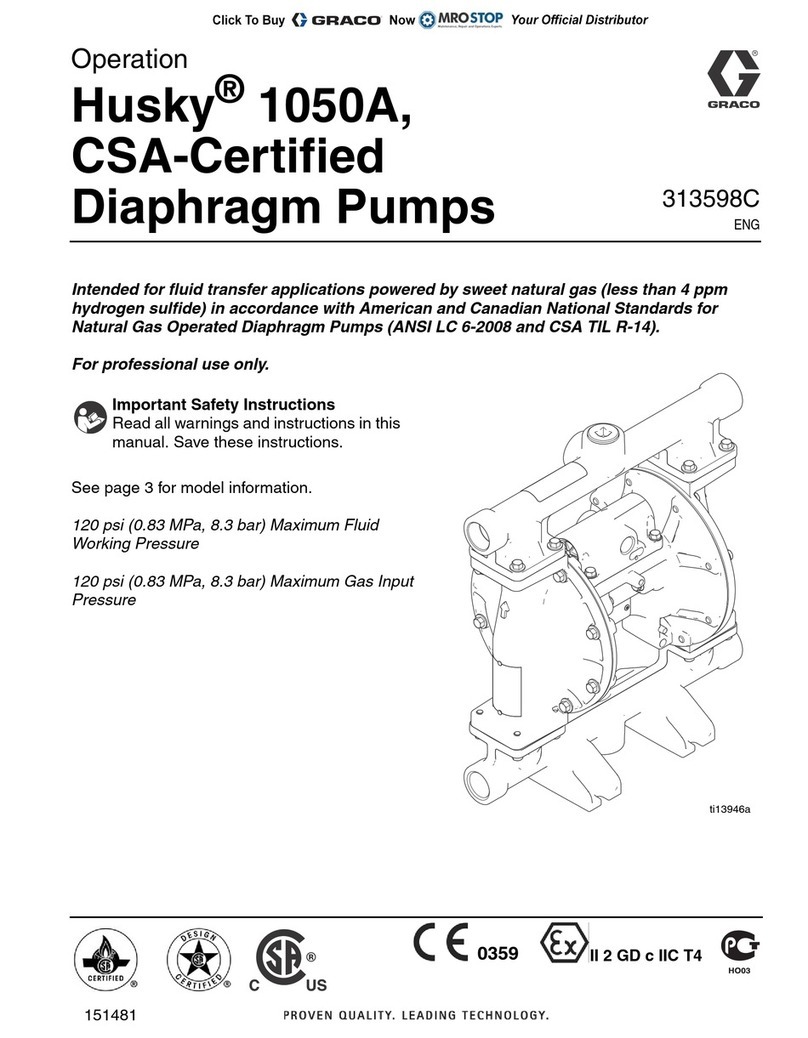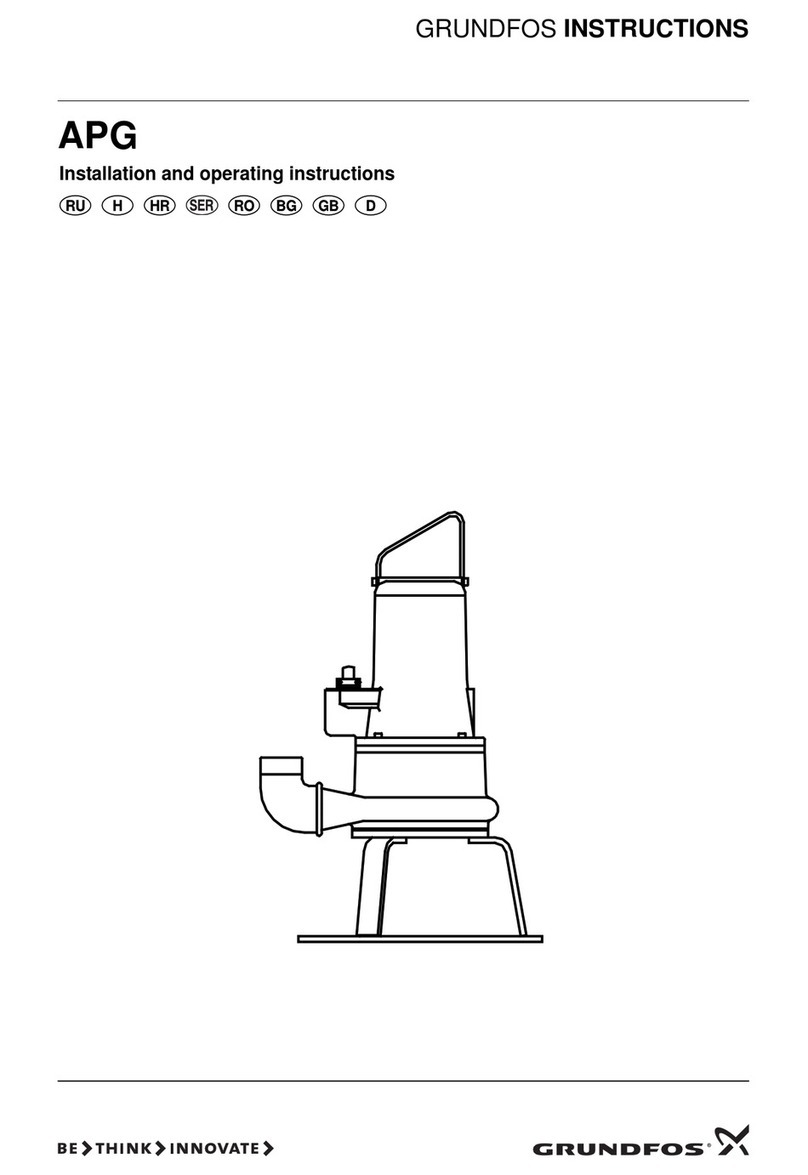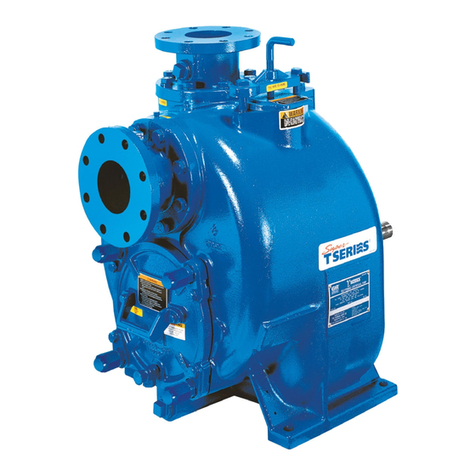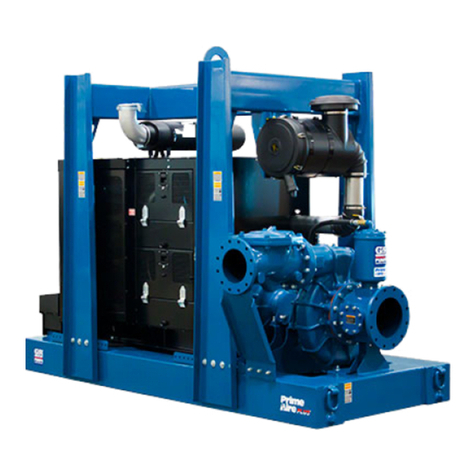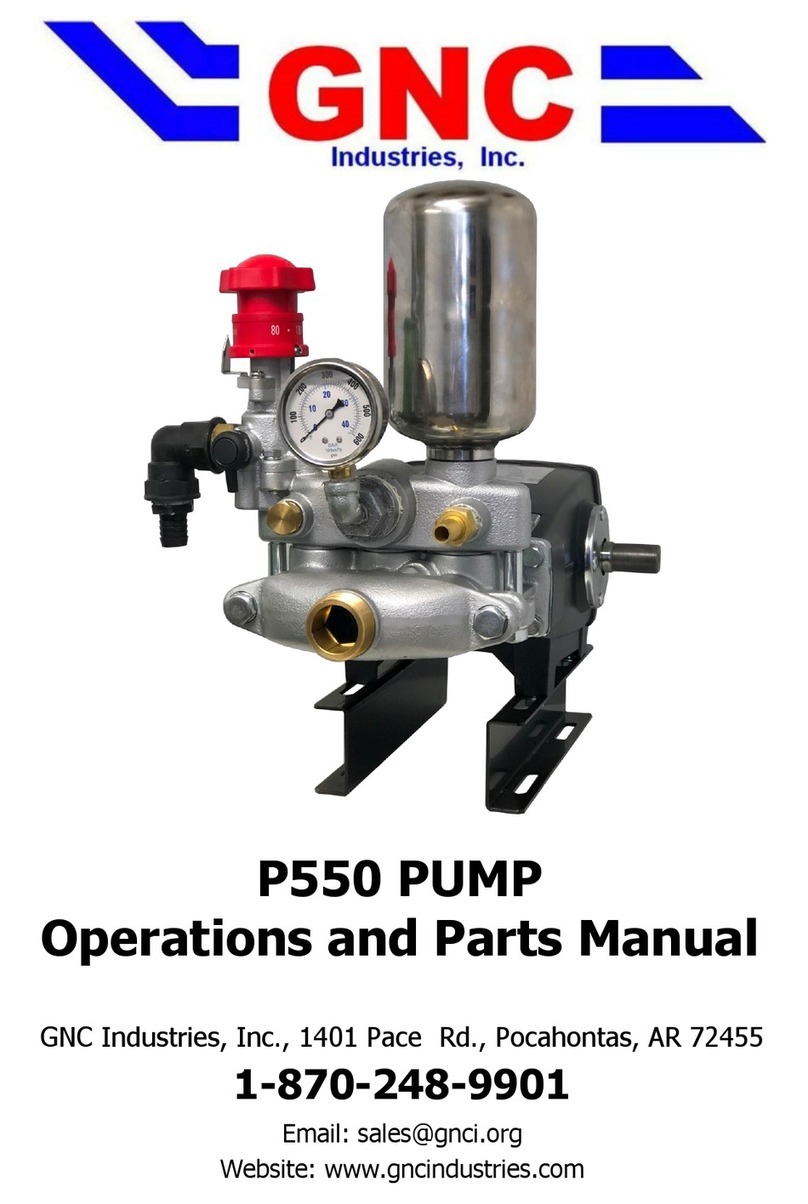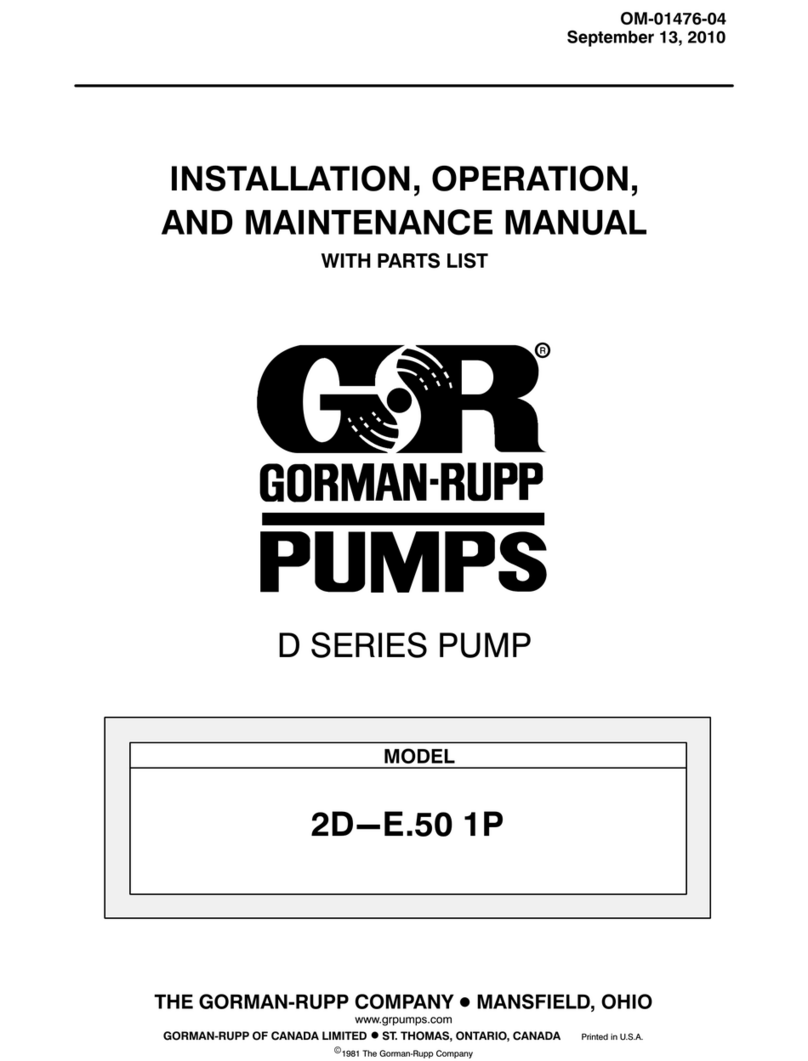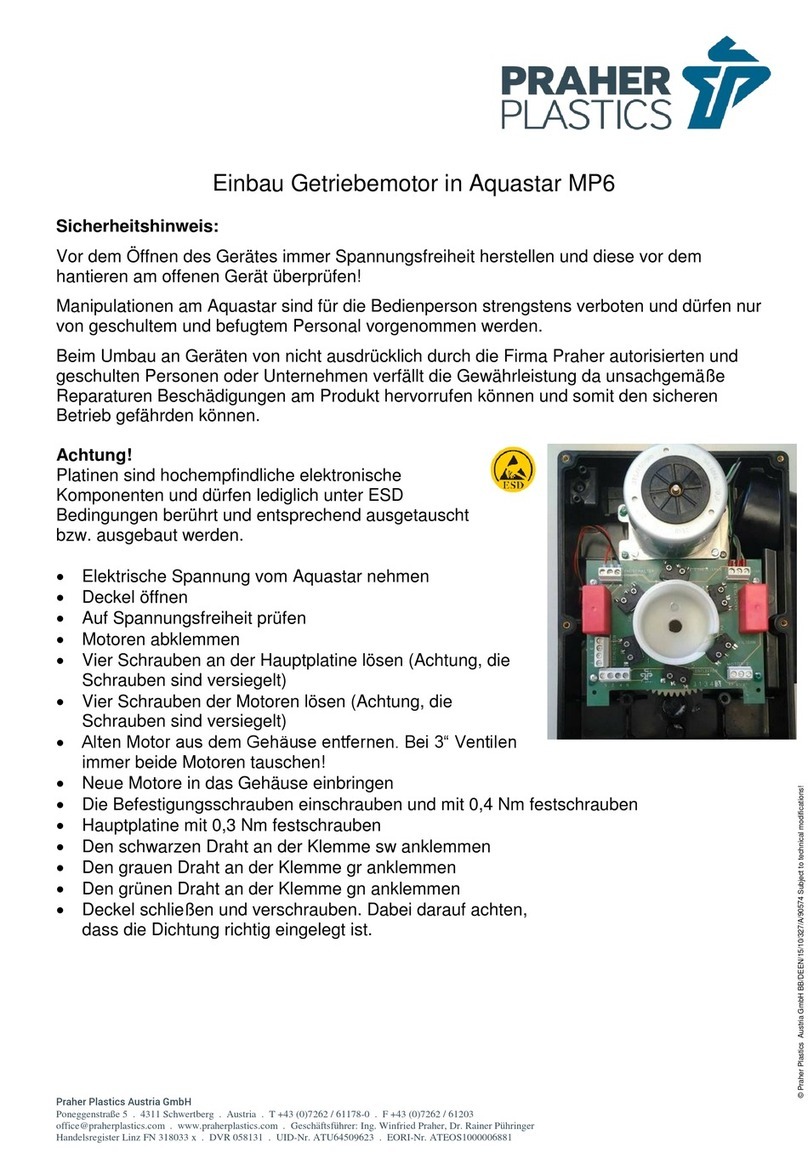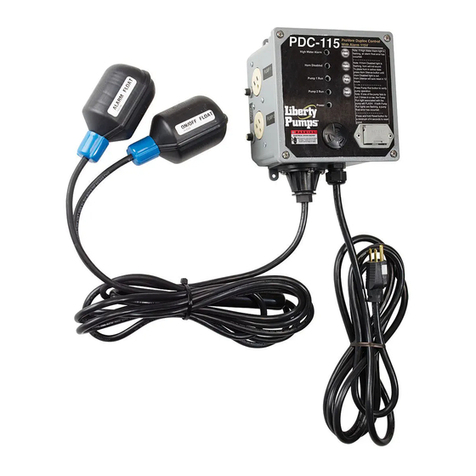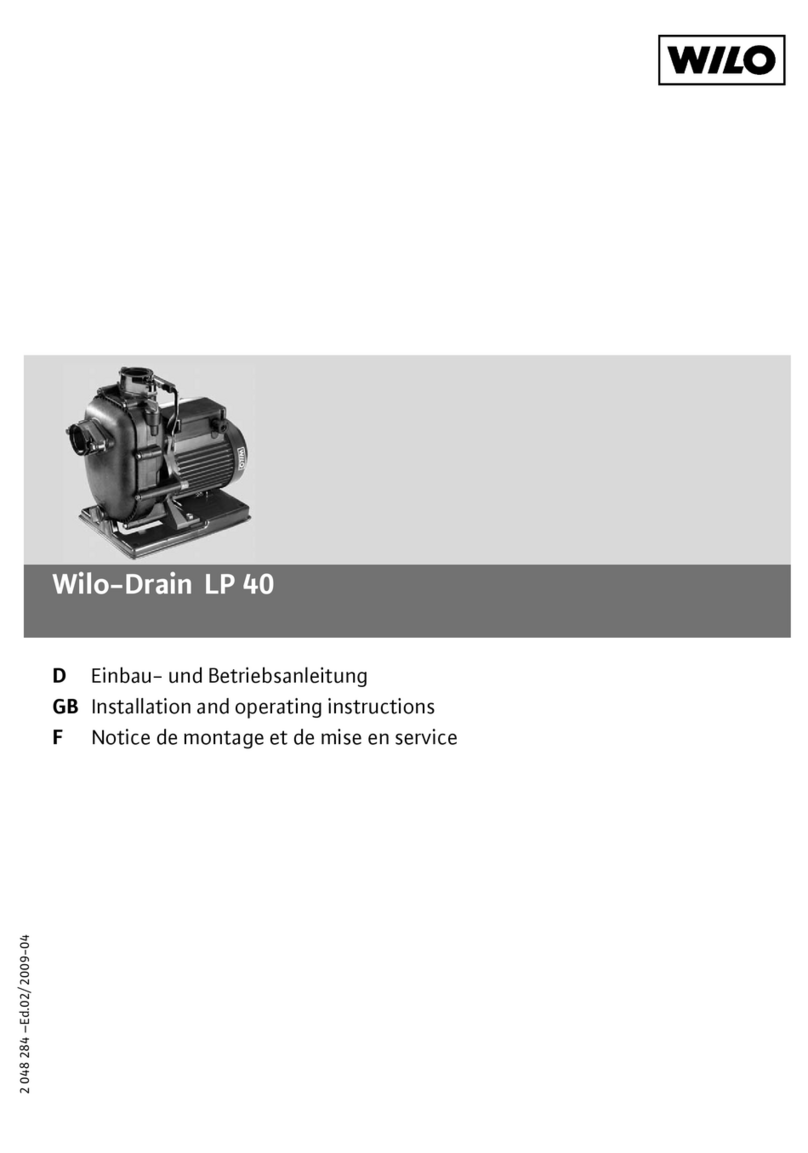Discharge — VAE and VFE Series pumps permit dis-
charge port location at any of four positions, 90 degrees
apart. VWE Series pumps permit port location at any
eight positions, 45 degrees apart. Change by removing
case bolts, rotate casing, and replace bolts. Ensure
there is adequate clearance with selected position
between wall or tank, motor conduit box, and grease fit-
tings.
1. If discharge line is short; size may be same as dis-
charge port; if long, use 1 or 2 sizes larger.
2. Long horizontal runs require a grade as even as
possible. Avoid high spots and loops. Trapped air
will throttle flow and may result in erratic pumping.
3. Install check and gate valves in discharge line if
required.
Pre-Start — Before initial start of the pump, check as
follows:
1. The rotation must be checked upon installation.
Close, then break the contacts quickly and observe
the rotation of the exposed portion of rotating parts.
Rotation must agree with the rotation arrow on the
motor. For all pumps, the standard rotation is clock-
wise when viewed from the top of motor. Motor
wiring is easily changed in the field. Observe the
wiring diagram on the inside of the terminal box
cover, or on the motor nameplate.
2. Check voltage, phase and frequency of line circuit
with motor nameplate.
3. Check suction (if used) and discharge piping and
pressure gauges for proper operation.
4. Assure that pump is completely submerged in liquid.
Priming — Pump requires no priming providing pump
is completely submerged in liquid. Tank must be filled,
and pump completely installed before operating pump.
Do not start pump dry and then fill tank as serious
damage from shaft defection can occur.
CAUTION - DO NOT RUN PUMP DRY. Pump requires liq-
uid for throttle bushing and lip seal lubrication.
Starting — Proceed as follows to start pump:
1. Close drain valves and valve in discharge line.
2. Start the motor (pump).
3. When pump is operating at full speed, open dis-
charge valve slowly.
Running — Periodically inspect pump while running,
but especially after first start and following repair.
1. Record pressure gauge readings for future refer-
ence.
2. Record voltage, amperage per phase, and kW (if an
indicating wattmeter is available).
3. Adjust pump output capacity with discharge valve.
DO NOT throttle suction line.
Freezing Protection — Protect pumps shut down
during freezing conditions by one of the following
methods:
1. Drain tank; remove all liquid from the tank.
2. Keep fluid moving in pump and insulate or heat the
pump to prevent freezing. If heated, do not let tem-
perature go above 100 to 150 degrees F.
3. Fill pump completely with 50/50 antifreeze water
solution.
Cleaning — Remove oil , dust, dirt, water, chemicals
from exterior of motor and pump. Keep motor air inlet
and outlet open. Regularly drain moisture from TEFC
motors.
Labeled Motors — It is imperative for repair of a
motor with Underwriters’ Laboratories label that original
clearances be held; that all plugs, screws, other
hardware be fastened securely, and that parts
replacements be exact duplicates or approved equals.
Violation of any of the above invalidates Underwriters’
label.
Temperature — Total temperature, not the rise, is the
measure of safe operation for a motor. If temperature by
thermometer exceeds limits for insulation class,
investigate and change operating conditions.
Lubrication (Pump) — Pumps should require no
maintenance, other than the motor bearings,
according to the following instructions:
TCV56 FRAME MOTOR, VAE MODELS
The bearings on the TCV56 motors are double shield-
ed and prelubricated. No lubrication is required for
the life of the bearings.
TCV140 FRAME MOTOR, VSE & VWE MODELS
Greasing motors every 9-12 months is acceptable for
less aggressive applications. However, vertical
motors under the following conditions should be
regreased every three months:
1. Continuous high ambients
2. Dirty or moist locations
3. High vibration
4. Pumping high temperature liquids
Procedure — Overgreasing bearings can cause
premature bearing failure. For motors equipped with
a Alemite fitting, clean tip of
fitting and apply grease gun. Use 1 to 2 strokes on
5HP motors or smaller, and 2 to 3 strokes on motors
above 5HP. Keep grease clean, and lubricate motors
at standstill. Do not mix
petroleum grease and silicone grease in motor bear-
ings.
Lubrication — Motors are pre-greased
normally with Shell Oil Company’s “Dolium R.” Two
equivalent greases which are compatible with the
furnished grease are Chevron Oil’s “SRI No. 2” and
Texaco Inc.’s “Premium RB.”
Motors that do not have Alemite fitting are equipped
with double sealed prelubricated
bearings, and do not require additional
lubrication.
MAINTENANCE
OPERATION




